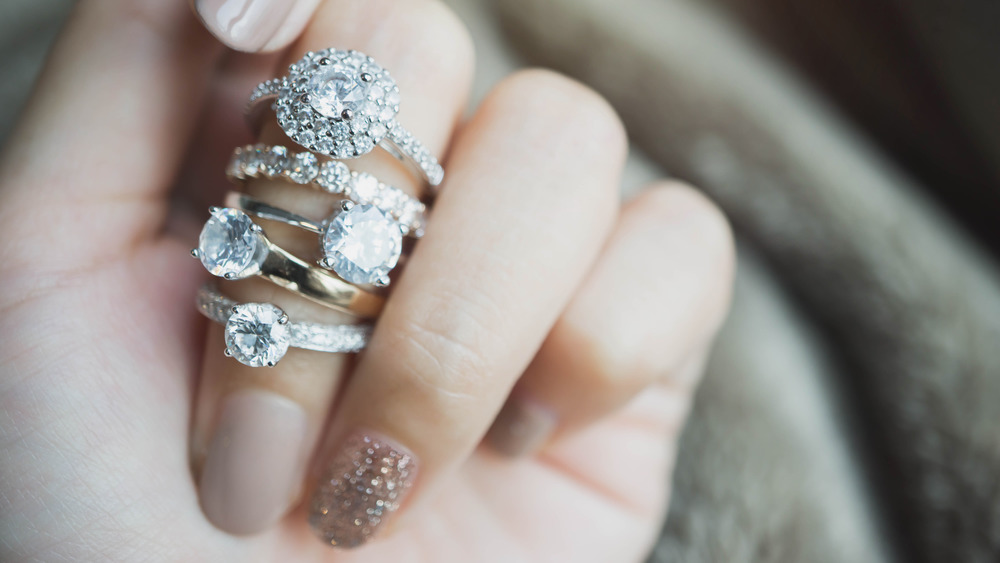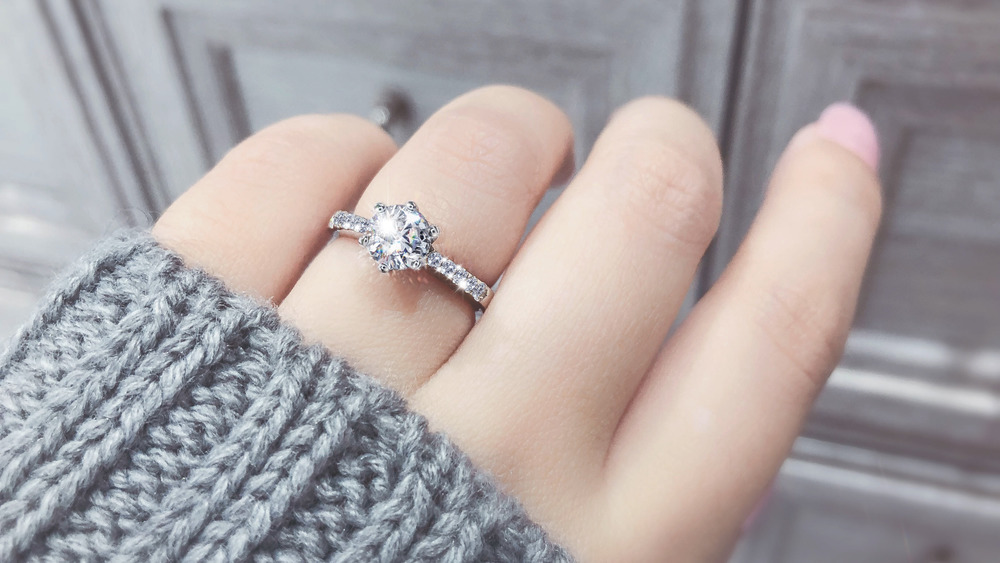How To Avoid Losing The Diamond In Your Engagement Ring
Many newly-engaged people consider their ring purchase to be nearly infallible, with the only item of concern revolving around misplacing their symbol of love. But, no matter how much you spend on your engagement ring, your stones still have a small chance of falling out. Your large stone or the small accent diamonds can fall victim to chipping, fogging, or worst of all, falling out. To make sure that your ring can stand the test of time, follow these guidelines.
The Spruce explains that stones fall out of rings for a variety of reasons — poor craftsmanship, wear and tear, a hard blow to the setting, or seemingly nothing at all. Sometimes, it's just the luck of the draw. In order to protect against these things, it's best to check in with your jeweler at least twice a year. While that may seem like a pain, your trips to the professionals may save you tons of headaches and hundreds of dollars later. The jeweler will ensure that the settings and stones are still intact and can withstand the movements of everyday life. You can also check your stones from time to time by gently wiggling the diamond and seeing if you notice any movement.
To check your settings, run your fingernail alongside the anterior wall of the diamond and press slightly to see if it moves up or down. If the stone doesn't do this easily, it's likely secure in the four- or six-prong setting, The Spruce notes. With bezel set rings or those without access to the outside wall of your stone, use a pin to do this by placing it on the outside edge of the diamond. If it wiggles slightly, it's time to take it in.
Take care of your stone and its setting
While checking your stones as frequently as possible makes for one of the best ways to care for your ring, there are other daily occurrences that you should look out for. Brides recommends avoiding touching the center stone at all costs. Taylor Lanore, diamond consultant and engagement ring designer for Lauren B. Fine Jewelry and Diamonds said to the outlet, "Diamonds and other precious stones are magnets for dust, dirt, and body oil. When you put on or take off your ring, try grabbing the band on either side of the stone instead of grabbing the stone itself. If your stone ever looks hazy or cloudy, it's likely that something is stuck underneath it."
Movements as simple as the removal of your band can make or break its longevity, so always make sure to remove your ring with your fingers on the sides. Plus, where you remove your ring is also important. Many have horror stories of leaving their jewelry in public restrooms and never seeing them again. The outlet suggests keeping your ring on while you lather up to avoid the risk. But, when it comes to cleaning your house, set your band aside. Tough chemicals and other abrasives can dull your gem's shine — fast.
Any "hand-heavy" movements should require your ring's removal. Experts recommend against wearing your band during activities like doing the dishes, working out, gardening, and cooking, according to Brides. If you're unsure of whether or not what you're doing requires the removal of your ring, it's better to be safe than sorry.

